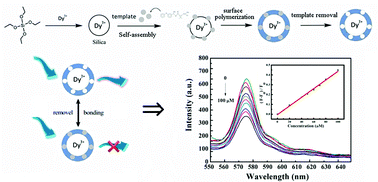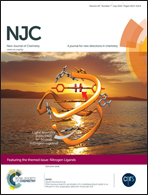A lanthanide complex-based molecularly imprinted luminescence probe for rapid and selective determination of λ-cyhalothrin in the environment
Abstract
Molecularly imprinted polymers cladded lanthanide complexes were synthesized via precipitation polymerization. The luminescent molecularly imprinted polymers were characterized by scanning electron microscopy, Fourier transform infrared spectroscopy and thermogravimetric analysis. The optical properties of the imprinted polymers were determined by fluorescence spectroscopy. Due to the highly selective cavities of the surface imprinted layer of the polymers, the imprinted polymers could be applied to the rapid, selective and sensitive determination of λ-cyhalothrin. Based on the quenching mechanism, the quantitative determination λ-cyhalothrin was proposed using the luminescent molecularly imprinted polymers as a fluoroprobe. Under the optimized experimental conditions, our fluoroprobe was successfully used for the selective and rapid recognition of λ-cyhalothrin. The fluorescent intensity of the fluoroprobe gave a linear response in the 10–100 μM concentration range with a correlation coefficient of 0.9963. In addition, the luminescence probe was proven to be suitable for the determination of λ-cyhalothrin residues in real environmental examples.


 Please wait while we load your content...
Please wait while we load your content...